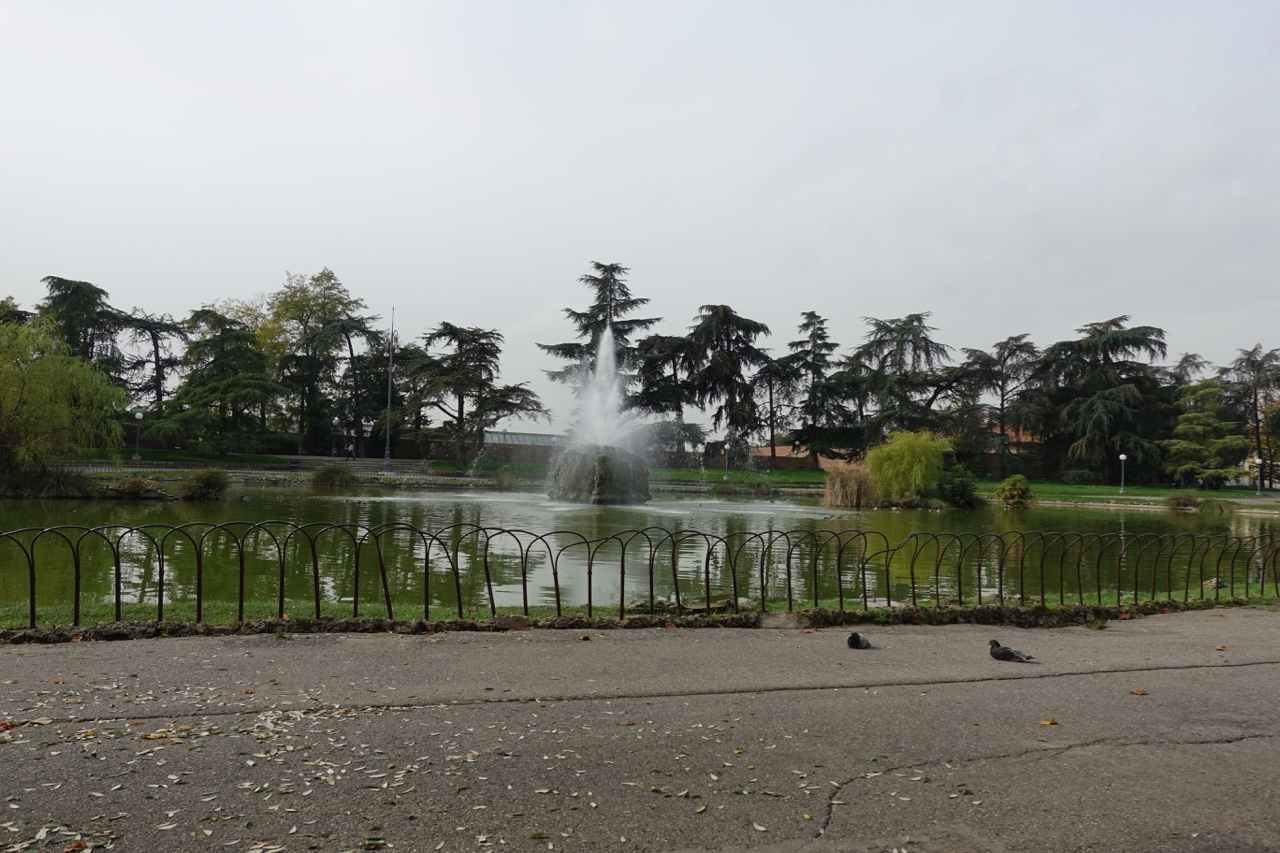“Return” by Charlie Sofo.
This email will end with a photograph of a fountain—I took it when I began writing this seven years ago. I hope now might be the right time to put it into circulation. Now is the moment where you are, reading this. Before electricity powered pumps, fountains relied on the force of gravity, osmosis, sophisticated plumbing—a channelling of rivers and aquifers into a sculptural form. This thought delights me; the ornate spout as a sort of outlet for planetary hydraulics, the water erupting from a stone tortoise’s mouth an indicator of a distant reservoir, a collapsed ocean current system, a drought, a flood.
In 2016, I came across a poem about a fountain by Ania Walwicz. Her book Writing found me in a flea market on the other side of the world. Ania lived in Melbourne, where I live, but I wasn’t aware of her social context until she died in 2020 and one of her friends, Ender, wrote a tribute to her online. She left a deep impression on many, including me. I decided to reach out to Ender to offer him my copy of her book. He didn’t have it, so it seemed like the right thing to do. This process of emotional hydraulics, to complete a circle feels appropriate in the context of death. The purpose of this text is to get you to the end, you must use an appendage or device to get there. Its 727 words long and there is one paragraph space between the end of this sentence and the next one.
If I want to get to a new location in the world I often use a map or ask for directions. But to return home I rely on my memory, which contains a mental map full of small landmarks that I conjure up. These details could be a missing tile on a building, a bloodied napkin on the ground, a cappuccino-coloured car, a condom dispenser. One such return occurred seven years ago, when I took a trip with my mum back to her hometown, San Severo in southern Italy. We visited her birthplace and we saw the graves of our family. The local cemetery was a place to catch up on what we had missed, to be with the dead. The caretaker of the cemetery dug around in filing cabinets to find where our Nonni were located, as their bones had been moved into a high-rise crypt. I’ve learned recently that the dead don’t simply decompose but that we live with them, literally and figuratively, and they help us find our way back.
Have you ever looked out of a plane window and seen the shadow of the aircraft on the ground? It’s compelling because the whole shape of the aircraft and its relationship to the ground is clearly articulated—in motion, from the heavens. The shadow is like a huge film of the aeroplane being projected on the earth. Awareness of your occupancy inside a larger body at this scale seems overwhelming. When I’m travelling inside an aeroplane, thoughts of mortality overwhelm me, I can’t help it. I know this is a common experience—being in a plane is a form of suspension between life and death, a hovering waiting room.
A few weeks ago, my dad died, and I returned home to be with him. I don’t need to explain the significance of this—he was an important presence in my life and somehow, I always imagined he would be around to see the unspooling film of my life. Who will watch it now? Seven years ago, I was resting, waiting, staring at a pond in a park when, suddenly, the fountain sprung on. I thought, what a nice thing to witness. I had been there an hour just sitting, peacefully. The mechanism of this text is to create metaphor, to point to the things, landmarks, feelings, and words that come to matter. Lately the only thing that feels real is the dead.
I saw this fountain. Showing off. I was a fountain. All lit. My heart red as my lips. I was looking at the fountain go up. I was gushing looking. I was the fountain in the middle of the park. I was lit at night. I was the centre of the park in the darkness. I was gold water.
–Ania Walwicz
